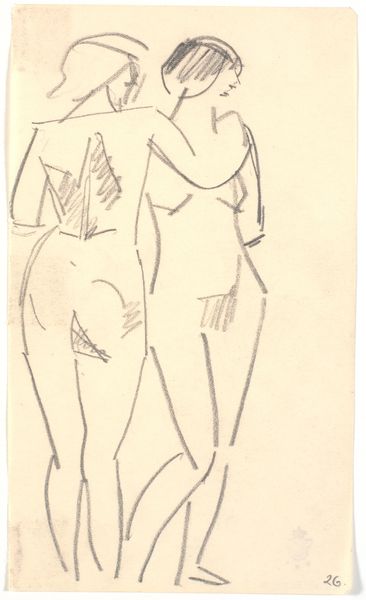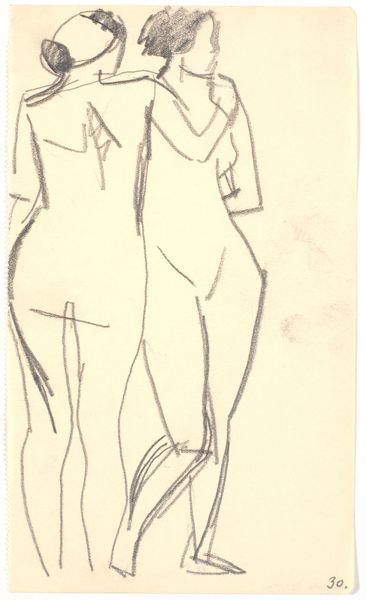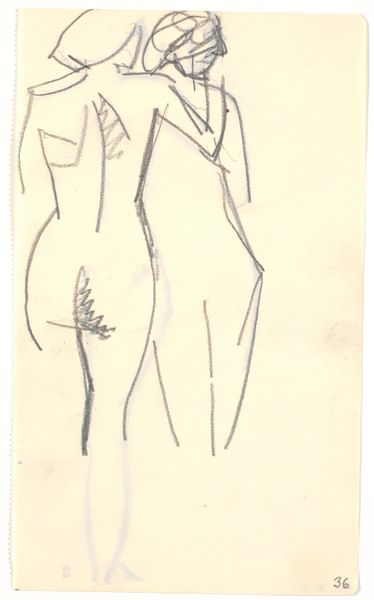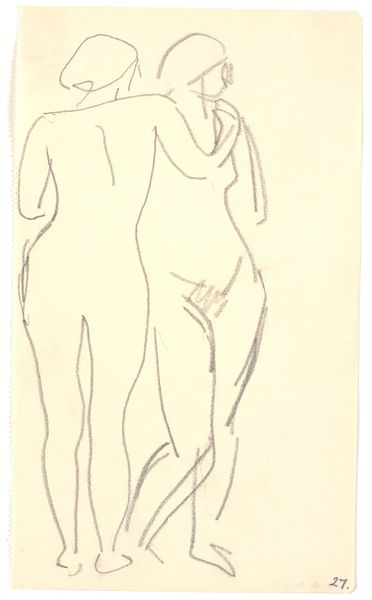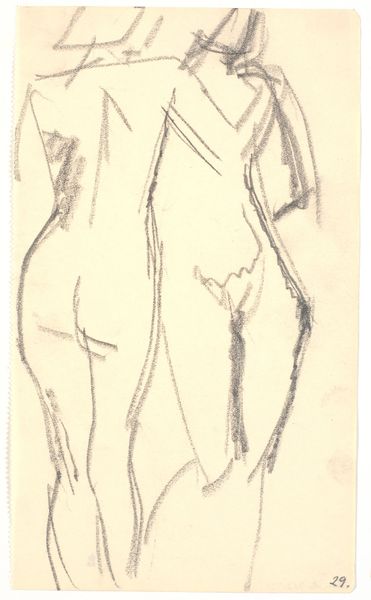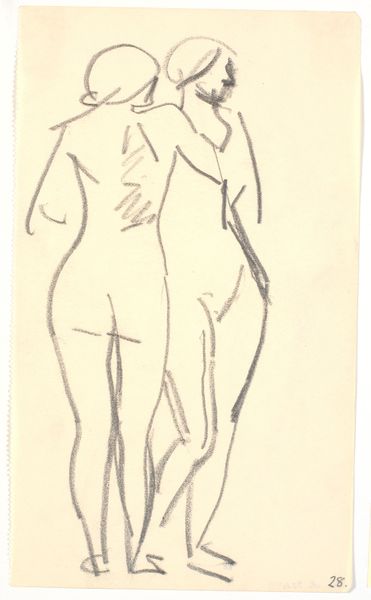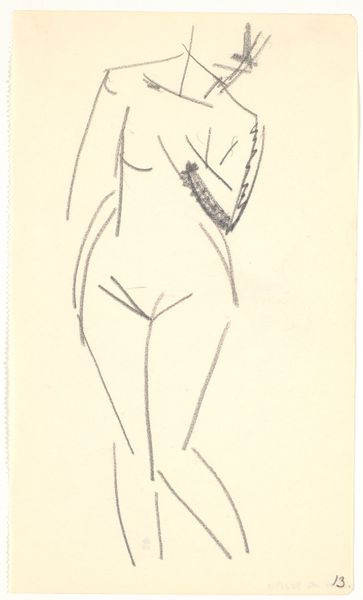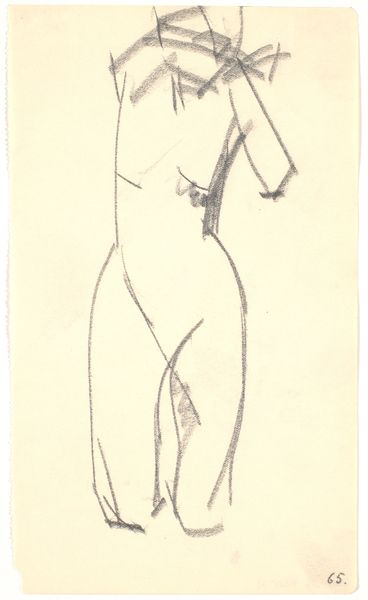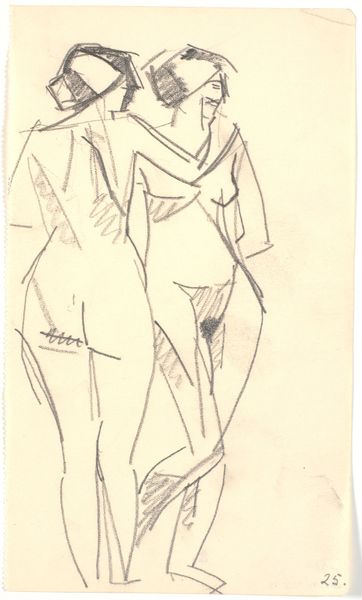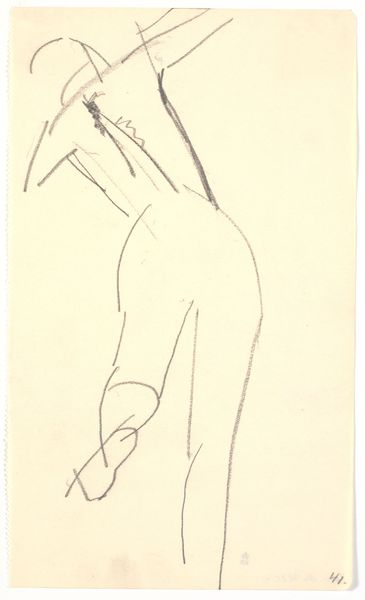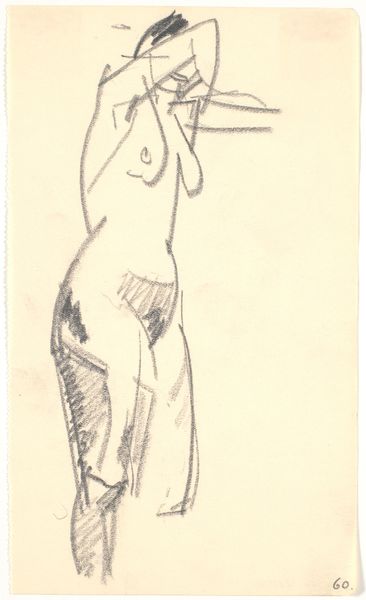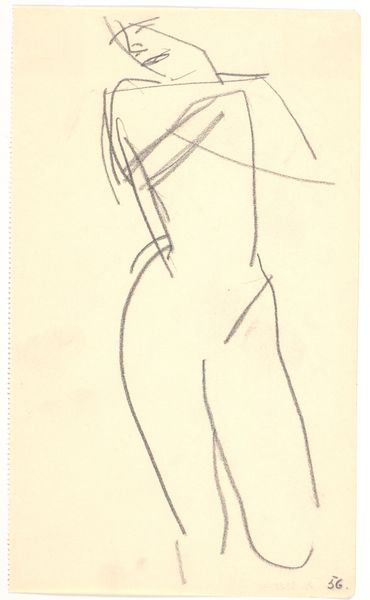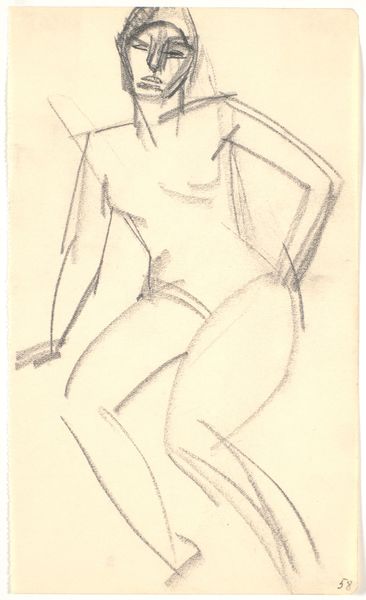
drawing, pencil
#
drawing
#
figuration
#
pencil
#
expressionism
#
line
#
nude
Dimensions: 209 mm (height) x 124 mm (width) (bladmaal)
Editor: Here we have Karl Isakson’s “To stående modeller,” created with pencil sometime between 1914 and 1915. It depicts two nude figures standing close, their backs facing us. I’m immediately struck by the raw, almost vulnerable quality of the lines. What sense do you make of this piece? Curator: It’s a compelling drawing. Considering its historical context, created during the tumultuous years leading up to and encompassing World War I, these figures can be interpreted as embodying the societal anxieties and shifting cultural values of the time. What purpose do you think depicting them from behind serves? Editor: Perhaps to create distance? Or anonymity? Almost as if they represent universal figures instead of specific people. Curator: Precisely. And in that era, the nude form was a battleground for debates around representation and the "acceptable" depiction of the body. It challenged conventional academic art. Notice how the linework itself contributes; the jagged, uncertain strokes, are suggestive of unease and uncertainty. Isakson also omits detailing, pushing against idealized bodies common to prior nudes in art history. Editor: It is as though the artist intentionally avoids sensualising these figures, conveying other themes instead. Do you feel their intimacy signals comfort, or something else? Curator: Their closeness could hint at solidarity amidst the increasing tensions, even a silent form of resistance to prevailing norms of art production and censorship of nudes. These two stand in their simple form. I wonder if a male artist could depict such scene in present times. Editor: That gives me a new lens for understanding the work, shifting away from purely aesthetic appreciation. This work encourages questioning prevailing societal standards. Curator: Absolutely, thinking about artwork and how they respond to censorship can truly unveil their revolutionary potential. We’re uncovering layers far deeper than simple aesthetic enjoyment, touching upon societal values and censorship in artwork. Editor: Right! Thinking about art in its socio-political context certainly enriches its message! Thanks!
Comments
No comments
Be the first to comment and join the conversation on the ultimate creative platform.
